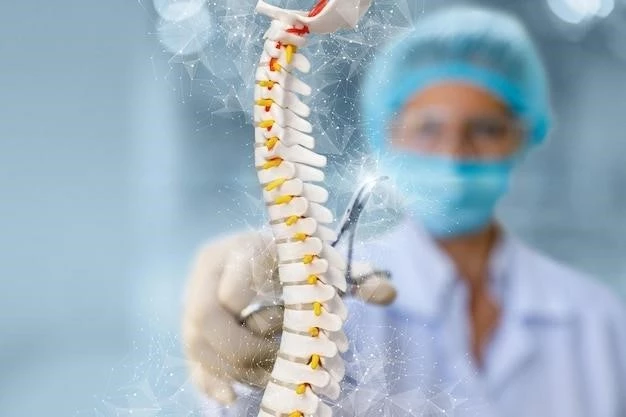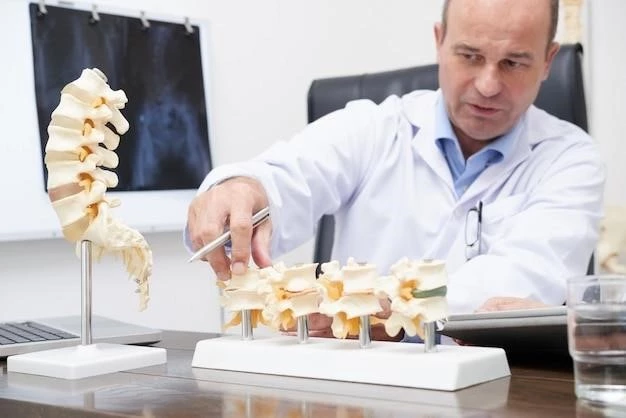Introduction to Rigid Spine Syndrome
Rigid Spine Syndrome is a slowly progressive congenital muscular dystrophy that manifests in childhood, characterized by contractures of spinal muscles and abnormal posture. It is commonly observed in the end stages of muscular dystrophies.
Definition and Overview
Rigid Spine Syndrome is a rare childhood-onset congenital muscular dystrophy characterized by contractures of the spinal extensor muscles, resulting in abnormal posture, limitation of flexure, and progressive scoliosis of the spine. Mutations in the SELENON gene are responsible for a significant portion of cases, with the genetic cause unknown in others.

Characteristics of Rigid Spine Syndrome
Rigid Spine Syndrome is a progressive childhood-onset congenital muscular dystrophy. It leads to contractures of spinal extensor muscles, abnormal posture, and progressive scoliosis.
Contractures of the Spinal Extensor Muscles
Rigid Spine Syndrome is characterized by contractures of the spinal extensor muscles, leading to limitations in neck and trunk flexure, resulting in abnormal posture. These contractures are a hallmark feature of the syndrome and contribute to the progression of scoliosis.
Abnormal Posture and Limitation of Flexure
Rigid Spine Syndrome is marked by abnormal posture due to the limitation of neck and trunk flexure, leading to postural abnormalities. This condition results in a progressive and non-painful restriction of movement in the neck and trunk.
Progressive Scoliosis of the Spine
Rigid Spine Syndrome is associated with progressive scoliosis of the spine, a condition where the spine develops an abnormal side-to-side curvature. This progression is a key characteristic of the syndrome, impacting posture and overall spinal alignment.
Causes of Rigid Spine Syndrome
Rigid Spine Syndrome may be caused by mutations in the SELENON gene, contributing to around 40% of cases. The genetic etiology of the remaining instances remains unknown.
Role of SELENON Gene Mutations
Mutations in the SELENON gene, formerly known as SEPN1, play a significant role in approximately 40% of cases of Rigid Spine Syndrome. This genetic alteration leads to the development of a specific subtype known as Rigid Spine Muscular Dystrophy 1 (RSMD1).
Genetic Factors and Unknown Causes
Rigid Spine Syndrome is primarily linked to mutations in the SELENON gene, known as SEPN1, accounting for around 40% of cases; The remaining cases have unidentified genetic causes, highlighting the complexity of the syndrome’s etiology.
Diagnosis and Symptoms
Children with Rigid Spine Syndrome present with contractures of spinal extensor muscles, leading to abnormal posture and scoliosis. Diagnosis involves identifying these physical manifestations in clinical assessment.
Clinical Presentation in Children
Rigid Spine Syndrome’s diagnosis is based on clinical signs seen in children, including contractures of spinal muscles leading to abnormal posture, flexure restrictions in the neck and trunk, and progressive scoliosis. These physical symptoms guide healthcare professionals in identifying and diagnosing the syndrome in pediatric patients.
Diagnostic Challenges and Criteria
Diagnosing Rigid Spine Syndrome presents challenges due to its overlapping symptoms with other muscular disorders. Criteria for diagnosis involve identifying contractures of spinal extensor muscles, abnormal posture, limitation of neck and trunk flexure, and progressive scoliosis. A thorough clinical evaluation and genetic testing are crucial for an accurate diagnosis.
Treatment Approaches
Symptomatic management is key in treating Rigid Spine Syndrome. Physiotherapy and occupational therapy play crucial roles in improving the quality of life for affected individuals. Additionally, early respiratory muscle involvement requires specialized attention.
Symptomatic Management
When treating Rigid Spine Syndrome, symptomatic management plays a pivotal role. Physiotherapy and occupational therapy are essential components of treatment to enhance the quality of life for individuals with this condition. Additionally, early involvement of respiratory muscles requires specialized attention to maintain respiratory function in affected individuals.
Physiotherapy and Occupational Therapy
Physiotherapy and occupational therapy are essential components of the treatment regimen for individuals with Rigid Spine Syndrome. These therapies aim to improve mobility, function, and overall quality of life for affected individuals; Early intervention with specialized therapy can help address the unique challenges associated with the condition.
Early Respiratory Muscle Involvement
Rigid Spine Syndrome presents early involvement of respiratory muscles, necessitating specialized management to maintain optimal respiratory function. Timely intervention and support for respiratory muscle health are critical components in the comprehensive care of individuals with this condition.

Research and Case Studies
Research on Rigid Spine Syndrome includes studies on preoperative balanced halo-pelvic traction for severe spinal deformity correction. Case reports explore severe rigid spinal deformities and contribute to the understanding of this condition.
Contributions of Preoperative Balanced Halo-Pelvic Traction
Research on Rigid Spine Syndrome highlights the contributions of preoperative balanced halo-pelvic traction in correcting severe spinal deformities. This approach has shown promise in improving the management of severe rigid spinal deformities.
Case Studies on Severe Rigid Spinal Deformities
Case studies focusing on severe rigid spinal deformities provide valuable insights into Rigid Spine Syndrome. By examining specific cases, researchers and healthcare professionals can enhance their understanding of the condition and explore potential treatment approaches tailored to individual patient needs.
